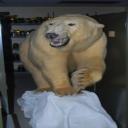Yahoo Answers is shutting down on May 4th, 2021 (Eastern Time) and beginning April 20th, 2021 (Eastern Time) the Yahoo Answers website will be in read-only mode. There will be no changes to other Yahoo properties or services, or your Yahoo account. You can find more information about the Yahoo Answers shutdown and how to download your data on this help page.
Trending News
Can anyone recommend a camera that takes good close-up shots of 3D objects to do geometric morphometrics with?
I'm a paleontologist, and will be taking a lot of close-up images of shells that I need to be high-quality and non-distorted. I've heard most digital cameras cause some distortion, I currently have a Nikon Coolpix and the auto-focus doesn't work well for gastropod shells.
I'm hoping to hit up the sales on Black Friday, and get a camera that will take non-blurry relatively close up non-distorted shots--any suggestions?
Thanks!
4 Answers
- 1 decade agoFavorite Answer
Oh~~ I think maybe you have already got the idaeas. Good luck
- 1 decade ago
The previous answer of getting a Nikon SLR with a Macro lens did not really answer any of your questions.
Angular distortion is your concern, and that is caused by camera perspective (where the camera is).
If you are extremely close to a straight object, the center (which is closer) will appear larger and the edges (farther away) will appear smaller. The best example of this is taking a picture of a brick wall.
So the remedy to this is to move farther away from the subject and use a longer focal length lens for magnification.
This has nothing to do with digital or film cameras being any different... and there is no case for Nikon being superior or inferior to any other brand.
Taking macro shots with a long focal length lens makes shooting incredibly sensitive to camera shake (introducing blur). This can be remedied with additional lighting and a tripod.
When shooting a small subject close to a long focal length lens, the depth of focus/depth of field is very narrow (meaning when you put a depth in focus, anything not at that depth will be extremely blurry). This can be remedied by closing the aperture (F-stop) down as small as possible.
F-stops are counter-intuitively inverse. F22 is very tiny (lots of depths in focus) while F2.8 is a very large hole to let light in (very narrow focus).
I personally shoot with the following for my macros:
Canon Digital Rebel XSi/450d
Canon EF 100mm f/2.8 USM Macro Lens
- hahnLv 45 years ago
it is extremely in opposite. you want a intense zoom lense with the macro function. For this you want a really appropriate-high quality digital camera, one with changable lenses, and doubtless a 100mm lense or more advantageous. i have were given a 300mm with macro and from about a backyard away i will take really surprising pictures of tiny, insects and plant life and stuff. My digital camera makes use of 35mm movie, yet with Nikon, a minimum of, the lenses artwork on 35mm and digitals, for the most area. both way, the macro option will take you about $2 hundred for a good lense, plus digital camera value, which varies. i'd watch for a birthday or Christmas.
- 1 decade ago
get Nikon digital SLR
and a Macro lens...its specially made for close up photography.





